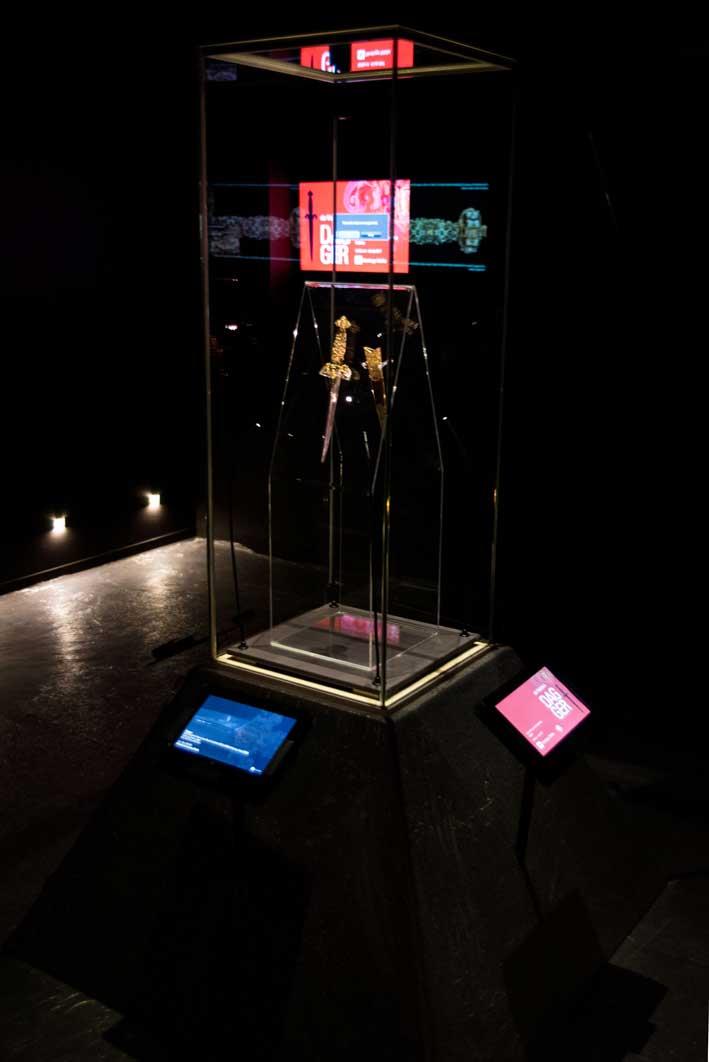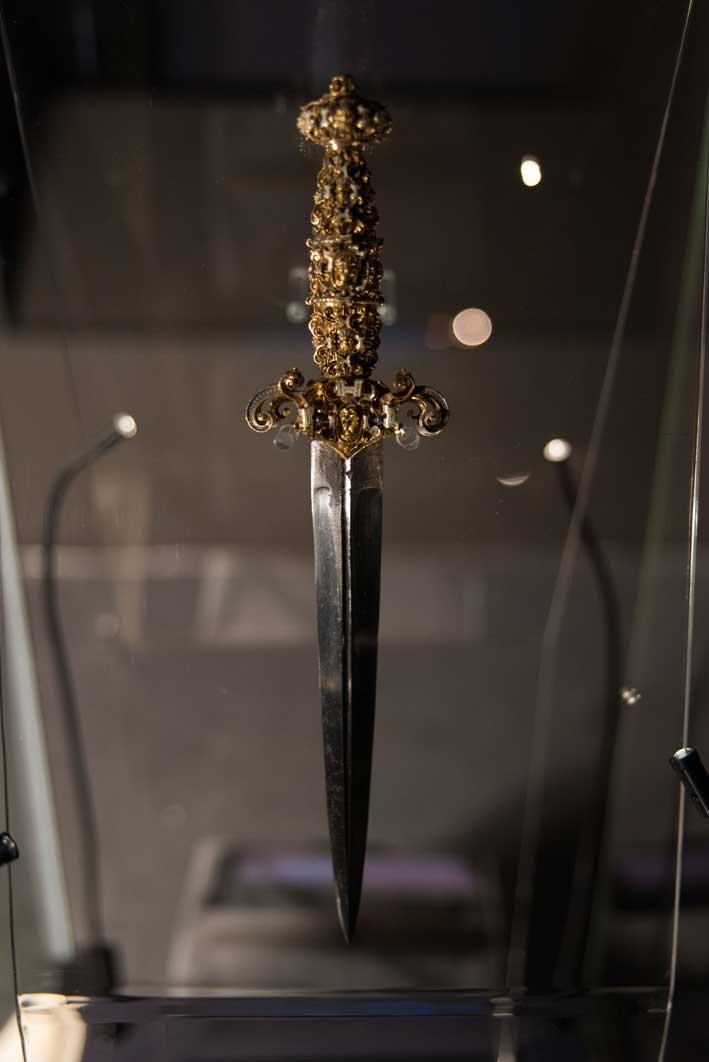The legendary dagger of Grandmaster Jean Parisot de Valette’s has finally returned to Malta. It will be on display at the Museum of Archaeology in Valletta between Saturday and July 9.
Heritage Malta yesterday explained that the sword – the two blades make up one set – could not be brought to Malta because of its fragile condition.
The dagger, which still retains its original blade, is fashioned with a well sized cross guard and side rings and is similarly decorated as the sword. It is actually classified as a poniard, which is a small, long, lightweight thrusting knife-type weapon. The dagger was made to be used as a parrying weapon in conjunction with the sword.
Originally both sword and dagger had a gold decorated girdle and sheaths, long lost and forgotten. Napoleon Bonaparte kept the dagger for himself and adorned it with this decorated sheath. The original was either missing, in a bad state or not to Napoleon’s liking.
The ‘sword and dagger of the Religion’, originally King Philip’s II own weapons, were gifted to the Grand Master de Valette’s as a symbol of appreciation following the victory of the Great Siege of 1565. They were annually paraded unsheathed during the 8th September festivities, until 1797. The sword and dagger were kept together with other precious and iconic items in the Order’s treasury.

The sword was used in the funeral of Grand Master de Valette and seemingly sporadically in the Grand Master’s possession ceremonials at Mdina and Birgu. It remains to be ascertained how de Valette’s sword left Malta for Paris. However somehow it arrived in France at the Bibliotheque Nationale. The sword is a typical mid-16th century rapier with a rich and elaborate hilt.
The sword’s original blade and the tang button were both replaced, probably in the 19th century, for as yet unknown reasons. King Philip II inscribed the word PLUSQUAM VALOR VALETTE VALET on the original blade of the sword, meaning that the Grand Master was more valorous than valour itself.
The sword’s hilt components are made of cast and chiselled gold, fashioned in the form of golden scroll straps, ribbons, clusters of fruit decorations and profile cameos and frontal grimacing portraits, all highlighted with turquoise, red, black, white and blue enamels.

Heritage Malta said the Louvre authorities were very collaborative while discussing this loan. However, the sword could not be displayed together with the dagger since it has complex conservation problems because of which it cannot travel without causing permanent damage.
“In actual fact the sword and dagger never belonged to the Maltese. They were the personal possession of Grand Master de Valette, and became property of the Order of St John following his death in 1568, until the French took over in 1798. When Napoleon took possession of the sword and dagger in 1798, he sent the sword to France but kept the dagger for himself until his death in 1821. The sword and dagger were reunited once again when they were displayed for the first time at the Louvre from 1852 onwards.
The Treaty of Vienna of 1815 decreed that all items looted by the French during the Napoleonic Wars were to be returned. However the Order of St John was in disarray and it did not even have a Grand Master at the time – a situation which continued until 1879, during which time it was led by a Lieutenant. It appears that no claim was ever made by the Order.